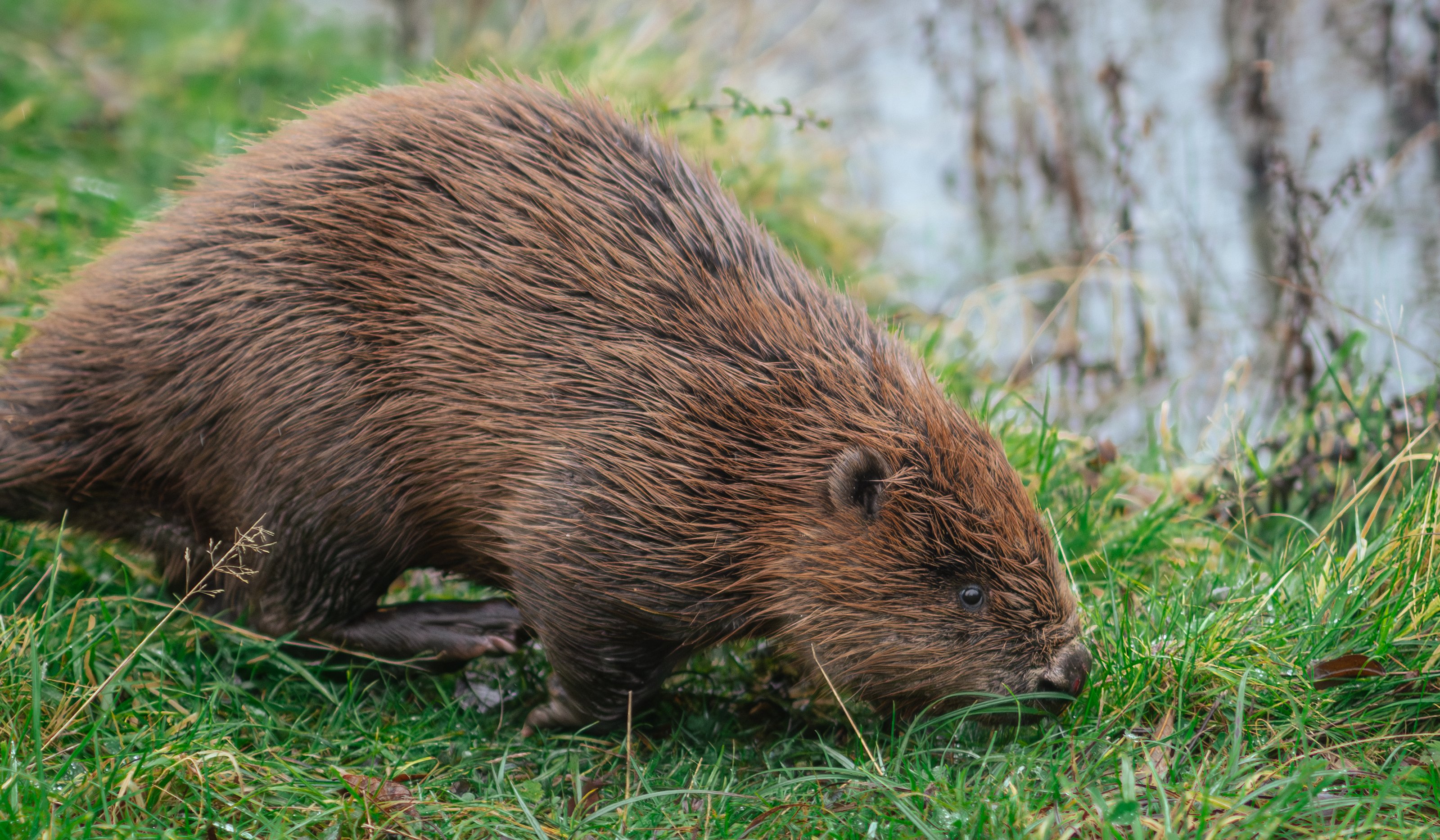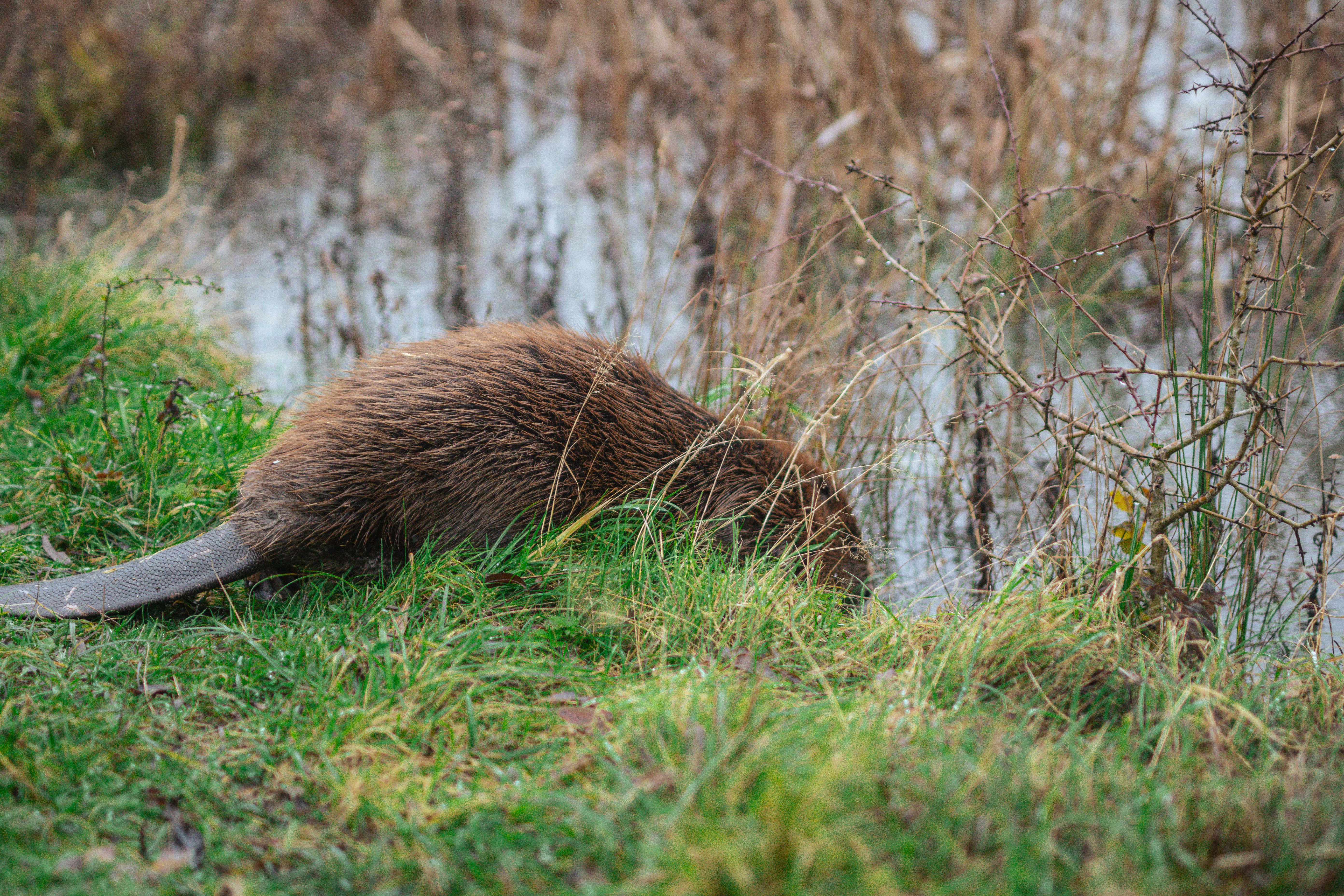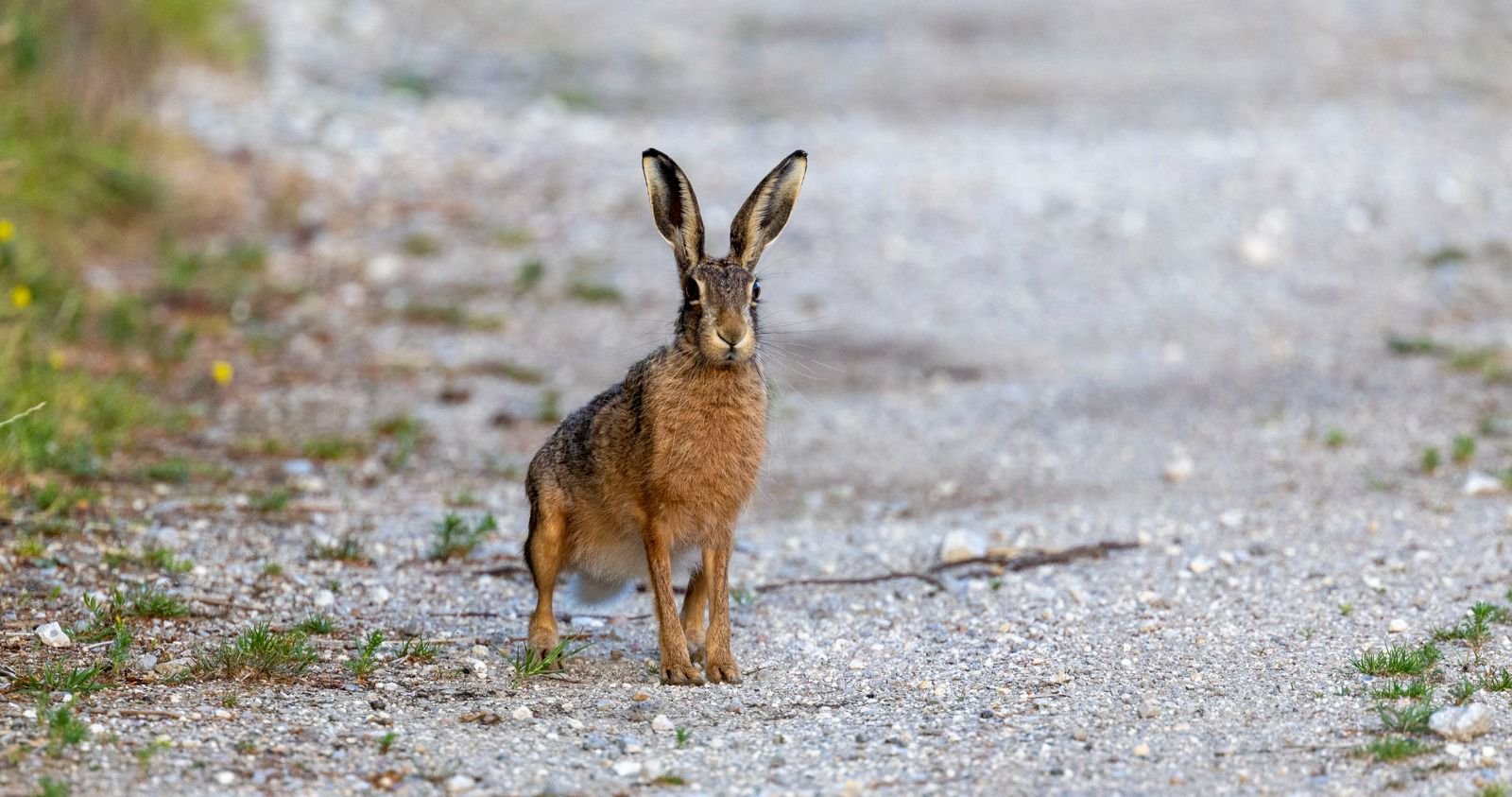- Home
- Written by Wrendale
- On the farm with Wrendale - Welcoming beavers back to Lincolnshire
On the farm with Wrendale - Welcoming beavers back to Lincolnshire

Just before Christmas, we welcomed the first pair of beavers back in Lincolnshire since they were hunted to extinction over 400 years ago on our rewilded farm in North Lincolnshire. Since then, we have been observing their activities on a series of cameras set up around the farm by Wrendale’s very own tech expert, Gareth. As they are nocturnal, most of the action has been at night but it has been absolutely thrilling to watch them as they set to work coppicing willow that grows at the margins of the pond. Even more exciting, their interactions show very positive signs that the pair are bonding and as they are both of breeding age (2-3 years) there is a chance that we might see some baby beavers this Spring.
Footage of the beavers bonding
The first clear evidence of the beavers around the site is the trees that they have coppiced. Beavers are vegetarian and particularly like to eat plants that grow in and around ponds and streams. The pond in the wood was quite overgrown with bulrushes and overshadowed by sallow and willows that have self set over the years. Already, the beavers have got to work and by grazing on the bulrushes and coppicing some of the willow, they have opened up the canopy, allowing more light to reach the pond. This in turn will help a more diverse array of plants to colonise the pond, providing habitat and food for an abundance of different species. Willow and other native trees evolved alongside beavers for millions of years and far from being damaged by the beaver’s activity, they respond to their coppicing by sending out shoots of vigorous growth. The beavers love to eat the bark from these tender stems. In effect, they are farming the willow to produce more food for themselves.

We’ve also begun to see some damming activities across the dyke that runs through the enclosure. Beavers feel safest when they are in the water. They tend to be reluctant to travel more than around 20m over land, so they engineer the environment to provide themselves with channels and pools of water along which they can navigate. By damming small streams, they keep the water levels high upstream of the dam, and this water can escape from the channel forming small pools and rivulets. Over time, this results in a far more complex mosaic of habitat and supports a much greater abundance of life across many different species than man made systems are able to.

Beavers pair for life and usually give birth to a litter of 2-3 kits in May or June. The kits stay in the lodge for a couple of months but are able to swim within hours of birth. Once they are weaned, young beavers stay in their family group and won’t disperse to find their own territory for at least a few years. Our beavers may not breed this year as they are still settling in but we’ll definitely be keeping our eyes peeled over the next few months!
Signs of the beavers showing courtship behaviour
want to find out more about the farm?
Click here to read more about how Hannah and Jack inherited their farmland and explore what they use it for today.
Subscribe to our Newsletter
Archive
- July 2025 (1)
- May 2025 (2)
- April 2025 (2)
- March 2025 (5)
- February 2025 (1)
- January 2025 (3)
- December 2024 (2)
- November 2024 (1)
- October 2024 (1)
- September 2024 (3)
- August 2024 (1)
- July 2024 (2)
- June 2024 (2)
- May 2024 (5)
- April 2024 (3)
- March 2024 (3)
- February 2024 (5)
- January 2024 (3)
- December 2023 (6)
- November 2023 (4)
- October 2023 (3)
- September 2023 (4)
- August 2023 (5)
- July 2023 (4)
- June 2023 (4)
- May 2023 (2)
- April 2023 (6)
- March 2023 (5)
- February 2023 (3)
- January 2023 (5)
- December 2022 (4)
- November 2022 (3)
- October 2022 (3)
- September 2022 (4)
- August 2022 (5)
- July 2022 (2)
- April 2021 (3)
